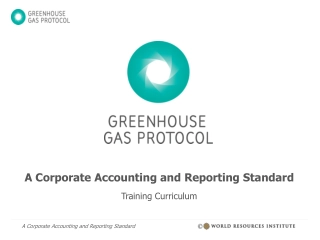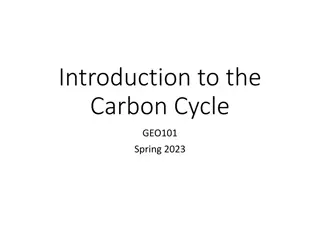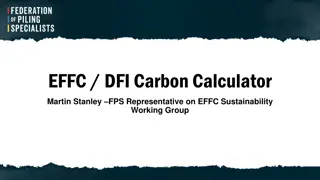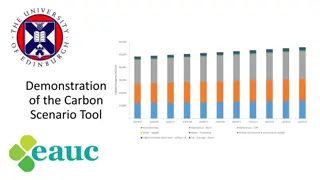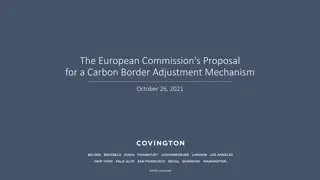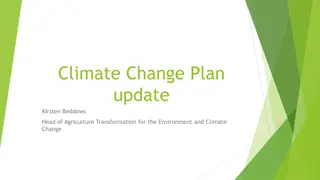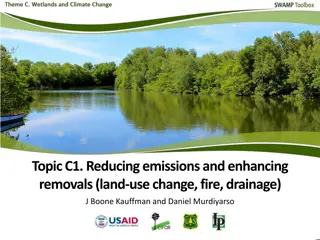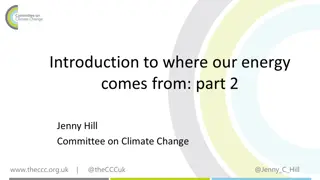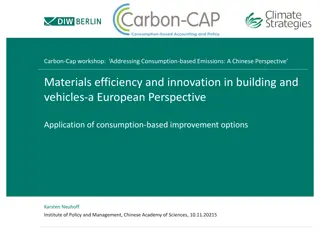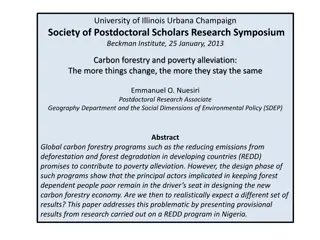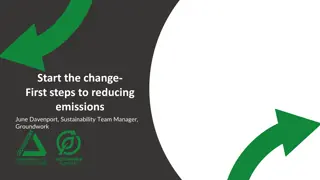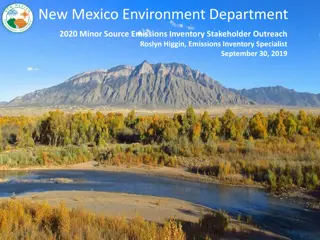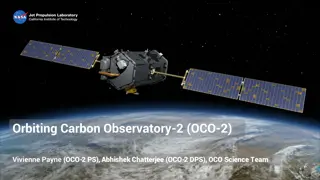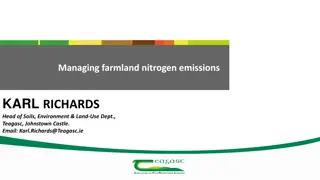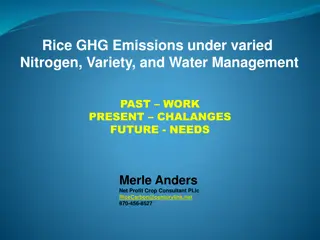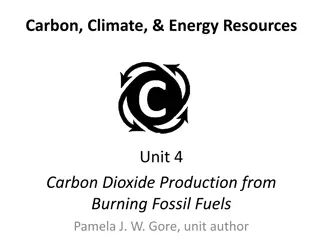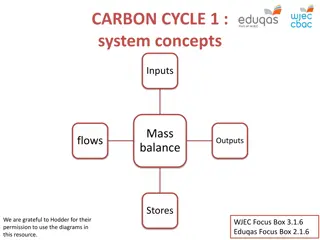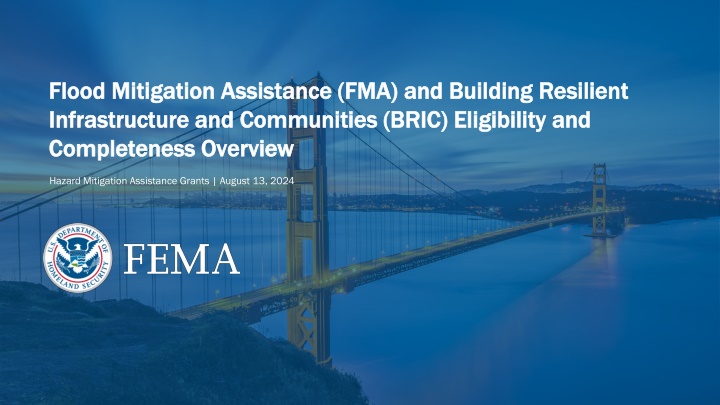
Link Between Carbon Emissions and Resource Efficiency
This collection of images and reports from John Barrett explores the link between carbon emissions and raw material use, current policy pathways, resource efficiency strategies, role of resource efficiency by-products, and more. Conclusions emphasize incentivizing social change, optimizing carbon-intensive products, and a government-wide approach. Find technical and non-technical reports, updates, and resources at www.creds.ac.uk.
Download Presentation

Please find below an Image/Link to download the presentation.
The content on the website is provided AS IS for your information and personal use only. It may not be sold, licensed, or shared on other websites without obtaining consent from the author. If you encounter any issues during the download, it is possible that the publisher has removed the file from their server.
You are allowed to download the files provided on this website for personal or commercial use, subject to the condition that they are used lawfully. All files are the property of their respective owners.
The content on the website is provided AS IS for your information and personal use only. It may not be sold, licensed, or shared on other websites without obtaining consent from the author.
E N D
Presentation Transcript
Flood Mitigation Assistance (FMA) Flood Mitigation Assistance (FMA) and Infrastructure and Communities (BRIC) Infrastructure and Communities (BRIC) Eligibility and Completeness Overview Completeness Overview and Building Resilient Building Resilient Eligibility and Hazard Mitigation Assistance Grants | August 13, 2024
Application Development Best Practices Do Do Don t Don t Use clear and consistent naming conventions for attachments Include inaccurate information Forget to attach key documents Provide unclear descriptions of the intended level of protection Provide supporting documentation Consider project scoping or phasing for larger complex projects Fail to connect natural hazards to the project Match project or activities with program and Notice of Funding Opportunity (NOFO) priorities Federal Emergency Management Agency 2
Benefit-Cost Analysis (BCA) FEMA requires all hazard mitigation projects to be cost-effective. Applicants and subapplicants may use one of three standard approaches: Streamlined Determination Method: Streamlined Determination Method: o For projects with a total cost of less than $1,000,000, the subapplicant may provide a narrative that includes qualitative and quantitative data demonstrating the benefits and cost-effectiveness of the project. o Pre-calculated benefits are available for some project types, including acquisitions, elevations, wind retrofits, tornado safe rooms, hospital generators, and post-wildfire mitigation. o Applicants and subapplicants may still opt to use a BCA to show cost-effectiveness of a project. Federal Emergency Management Agency 8
Benefit-Cost Analysis (BCA) (Cont.) Assistance: Assistance: o FEMA will review hazard mitigation project subapplications during the pre-award process that are competitive and otherwise eligible for selection. For BRIC for Federally Recognized Tribes, Economically Disadvantaged Rural Communities, and projects primarily benefitting Community Disaster Resilience Zones. BRIC, a BCA or Benefit-Cost Ratio (BCR) of at least 1.0 is not required at time of application For FMA Community Disaster Resilience Zones can submit subapplications without completing a BCA. FMA, Federally Recognized Tribes, small and improvised communities and communities in Discount Rate Adjustment: Discount Rate Adjustment: o If a streamlined cost-effectiveness determination method does not apply, a BCA is required to validate cost-effectiveness. FEMA has established a set discount rate of 3% to be used in a BCA for hazard mitigation projects for the FY 2023 BRIC and FMA cycles. Federal Emergency Management Agency 9
Helplines General questions about the BRIC and FMA programs can be directed to: General questions about the BRIC and FMA programs can be directed to: o For Applicants: FEMA Regional Offices at www.fema.gov/about/contact. o For Subapplicants: State Hazard Mitigation Officers at www.fema.gov/state-hazard-mitigation-officers. o For immediate assistance, you may also contact the HMA Helpline: 1-866-222-3580 For technical assistance with the FEMA GO system, For technical assistance with the FEMA GO system, contact the FEMA GO Helpline: contact the FEMA GO Helpline: o femago@fema.dhs.gov o 1-877-611-4700 (Monday through Friday, 8:00 AM 6:00 PM ET.) For questions about cost For questions about cost- -effectiveness and FEMA s Benefit effectiveness and FEMA s Benefit- -Cost Analysis software, contact the BC Helpline: Cost Analysis software, contact the BC Helpline: o BCHelpline@fema.dhs.gov o 1-855-540-6744 For questions about For questions about the National Environmental Policy Act (NEPA) the National Environmental Policy Act (NEPA) or or Environmental and Historic Preservation (EHP) Environmental and Historic Preservation (EHP) requirements, contact the EHP Helpline: requirements, contact the EHP Helpline: o FEMA-EHPHELPLINE@fema.dhs.gov o 1-866-222-3580 For questions about FEMA's Building Science publications, contact: For questions about FEMA's Building Science publications, contact: FEMA-BuildingScienceHelp@fema.dhs.gov Federal Emergency Management Agency 10 For questions about For questions about FEMA's Safe Room publications, contact: FEMA's Safe Room publications, contact: Saferoomp@fema.dhs.gov

